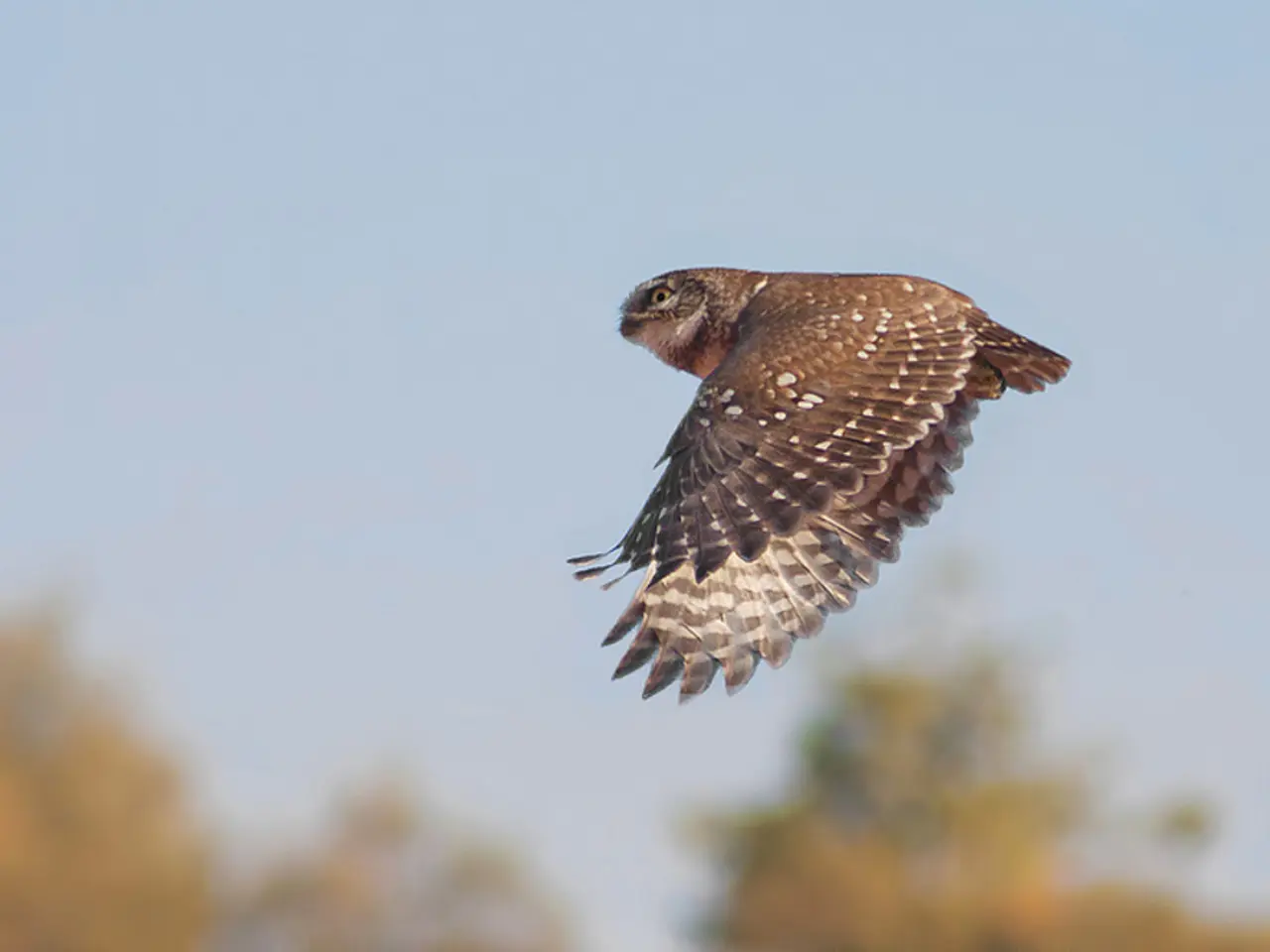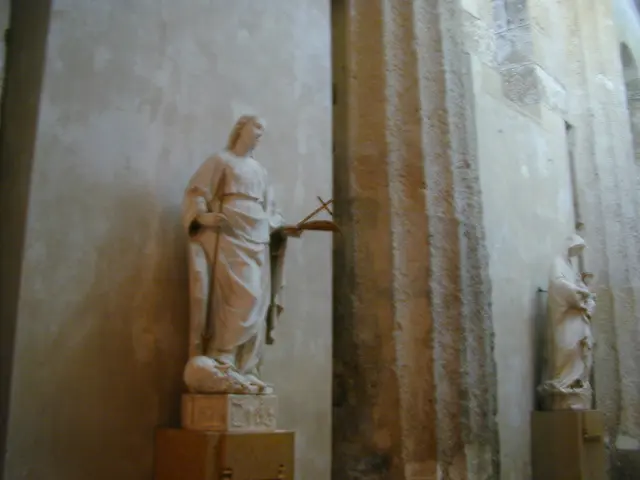Cosmic Owl Discovered: James Webb Telescope Reveals Uncommon Structure from Galaxy Collisions
In the vast expanse of the universe, a unique astronomical phenomenon has been discovered - the "Cosmic Owl." This cosmic event is the result of an extremely unusual collision of two rare ring galaxies, observed at a redshift of 1.14, approximately 11 billion light-years away from us [1][2][3].
The "Cosmic Owl" is named for its striking resemblance to an owl's eye, with each galaxy's core, packed with old stars around a supermassive black hole, forming the eye's centre [1]. The beak of the "Cosmic Owl" is a region of intense activity, containing an enormous clump of molecular gas, the raw fuel for star formation [2].
This collision has triggered a massive burst of star formation, transforming the beak into a 'stellar nursery' [3]. The radio observations from the Very Large Array suggest a jet of charged particles from one galaxy's black hole is slamming into and compressing the molecular gas cloud in the "Cosmic Owl," leading to the formation of new stars [2].
The "Cosmic Owl" offers valuable insights about how galaxies form and grow. By studying this cosmic event, astronomers can gain critical insights into:
- How galaxy mergers influence star formation rates: The merging process often funnels gas into dense regions, fueling starburst activity [3]. - The evolution of collisional ring galaxies: Such rings form due to specific gravitational collisions, and observing their merger sheds light on these formation mechanisms [1][2][3]. - Galaxy structure transformation during cosmic time: The redshift of 1.14 places this event around 8.5 billion years ago, offering a window into the galaxy assembly and evolution processes at earlier epochs of the universe [1][2][3].
Each galaxy in the "Cosmic Owl" has a diameter of roughly 26,000 light-years, about a quarter the diameter of the Milky Way [3]. The "Cosmic Owl" is an exceptional natural laboratory for researchers to study several critical galaxy evolution processes happening simultaneously in one system.
The "Cosmic Owl" joins several bizarrely shaped astronomical phenomena that the James Webb Space Telescope has previously spotted, including a question-mark-shaped structure formed from galaxies and a wisp of gas from a newborn star that resembles a cat's tail [4].
Researchers plan to study the "Cosmic Owl" further to understand the physical processes that created it, including the precise conditions that could lead to the formation of such a rare, symmetric 'twin-ring' morphology [5]. Ring galaxies account for only 0.01% of all galaxies discovered so far [6].
In conclusion, the "Cosmic Owl" is a remarkable discovery that provides us with a unique opportunity to deepen our understanding of galaxy evolution and star formation processes in the universe. Its study could potentially reveal crucial and previously underappreciated mechanisms for the rapid and efficient conversion of gas into stars.
The cosmic discovery of the "Cosmic Owl" is an exceptional resource for environmental-science, particularly in the field of space-and-astronomy, as it offers insights into how galaxy mergers fuel star formation and influence star formation rates. Additionally, the evolution of collisional ring galaxies, such as the "Cosmic Owl," can provide critical understanding of their formation mechanisms, which relies heavily on technology, including radio observations and telescope devices like the Very Large Array and the James Webb Space Telescope.




